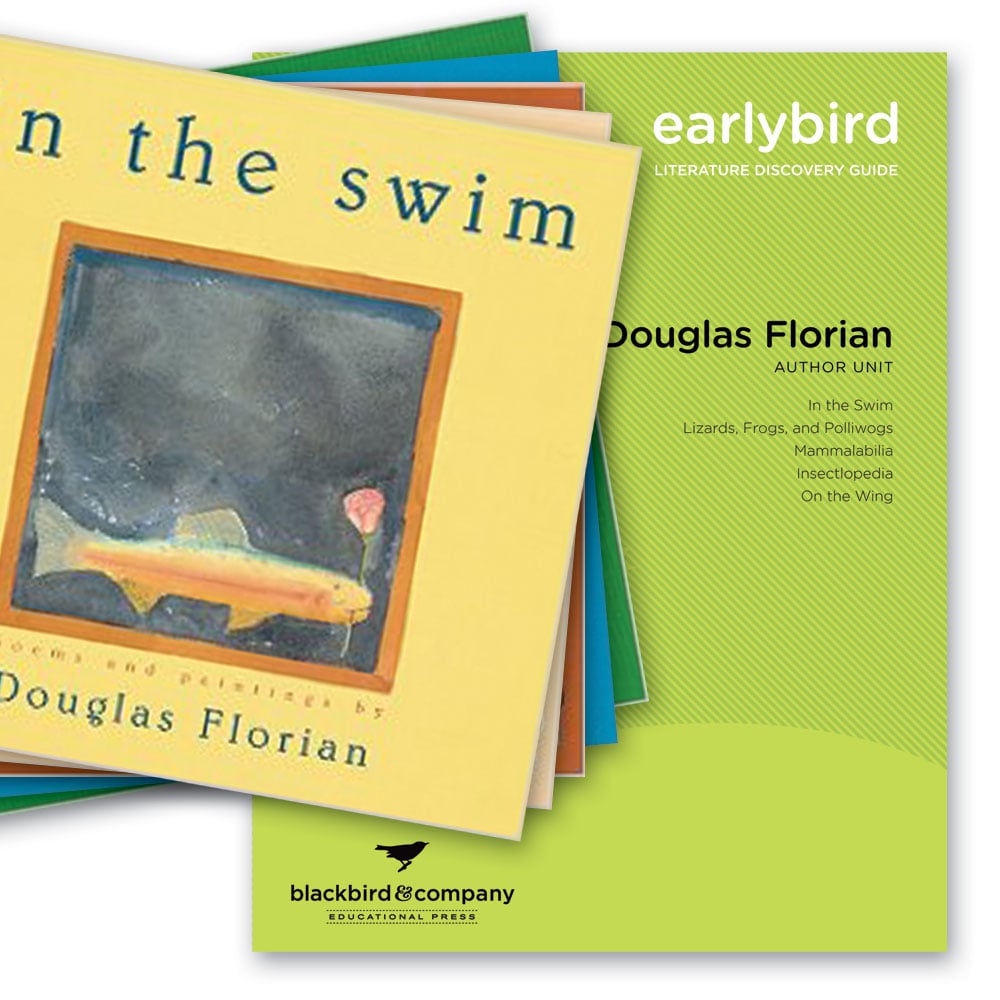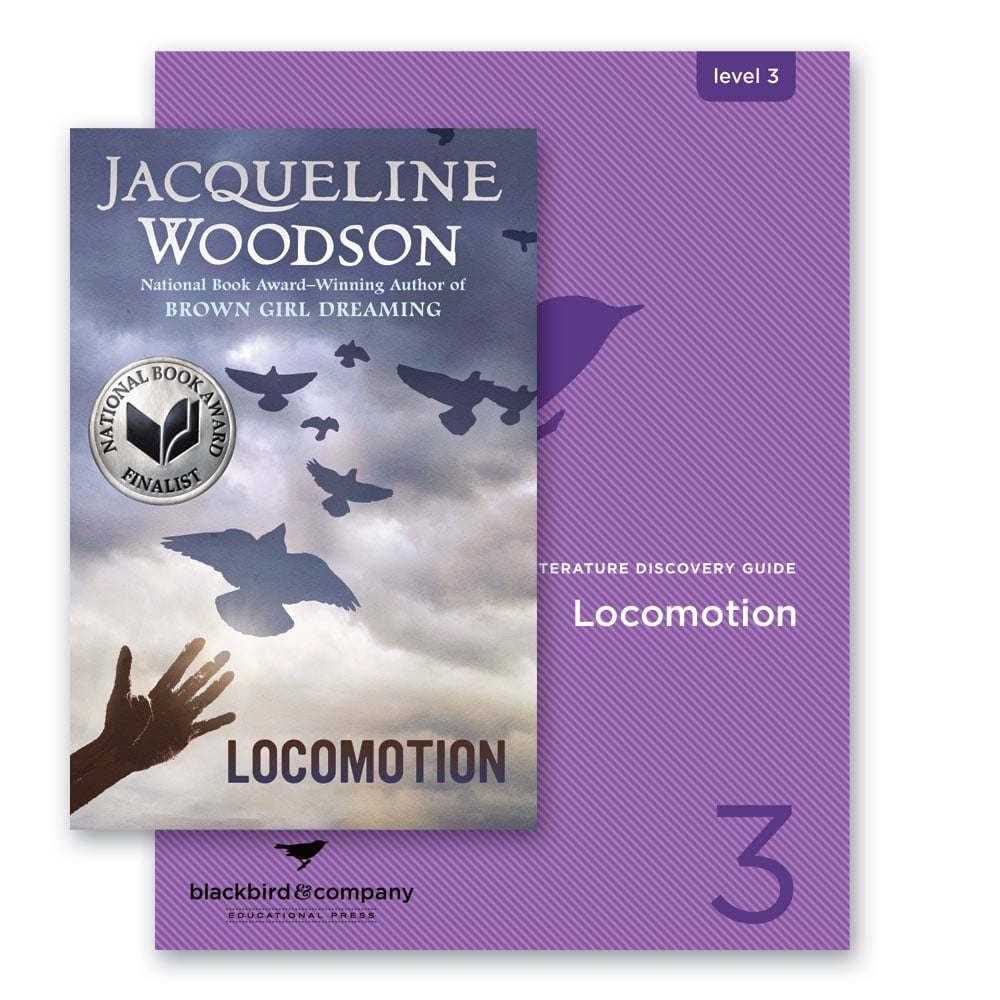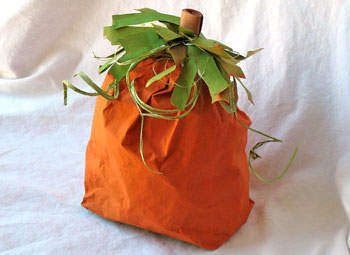 Try Douglas Florian.
Try Douglas Florian.
Winner of the Lee Bennett Hopkins Poetry Award and recipient of an ALA Notable Children’s Book Award, Douglas Florian is the author and illustrator of many children’s books. He believes there is only one rule when it comes to poetry, that there are no rules. Douglas Florian gives credit to his father as his first art teacher, who taught him to love nature. He begins his poems with research of the real thing and then uses that information to create an imaginary poem. Douglas Florian lives in New York City with his wife and five children.

Try Love That Dog.
What is a poem anyway?
I don’t want to
because boys
don’t write poetry.
Girls do.
Meet Jack, who tells his story with a little help from some paper, a pencil, his teacher, and a dog named Sky.
Although this guide includes many of the same elements as the other Level 1 guides, such as vocabulary and comprehension, the format is unique.Each week, your student will be encouraged and guided to write poems in the style of each poet being introduced in the story.

Try Locomotion.
When Lonnie Collins Motion – Locomotion – was seven years old, his life changed forever.
Now he’s eleven, and his life is about to change again. His teacher, Ms. Marcus, is showing him ways to put his jumbled feelings on paper. And suddenly, Lonnie has a whole new way to tell the world about his life, his friends, his little sister Lili, and even his foster mom, Miss Edna, who started out crabby but isn’t so bad after all
 Try Exploring Poetry.
Try Exploring Poetry.
Discover the poet within you!
This unit will help you discover the craft of writing poems and the delight of reading poetry. Over the course of seven weeks you will be introduced to some of the basic techniques used by poets, explore excellent poetry, and practice writing original poems. Each section is designed to be completed in about two, one hour sittings.

